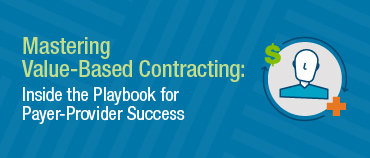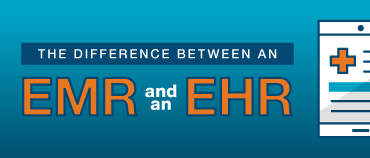While the year 2020 taught us many lessons, one of the most influential learned was the importance of communication and support. Uncertainty, hardship and adversity caused a spike in mental health issues, especially for those who’ve experienced them before.
The (CDC) reports 40% of U.S. adults struggle with their mental health, with 31% reporting symptoms of anxiety. Another study found nearly one-third of teens surveyed reported feeling unhappy or depressed in recent months because of the COVID-19 pandemic. If you’re experiencing any of these feelings, you’re not alone. This year’s Mental Health Month carries a lot of importance, as this past year has taken a hefty toll on our collective well-beings.
In honor of Mental Health Month, check out some insight from Denny Morrison, PhD, as he shares data-based insight regarding the relationship between our mental wellness and the pandemic. Dr. Morrison serves as the Netsmart Chief Clinical Advisor and continues to conduct extensive studies regarding behavioral health, including more recently the effects of the COVID-19 pandemic.
Mental illness affects everyone, either directly or through loved ones. One in five people will experience mental health issues in their lifetime, but everyone has their mental health challenged just by living – especially this past year. Prior to COVID, many people still believed that mental health problems happened to others, not themselves – even though mental wellbeing is essential to everyone’s health. Changes in people’s life situations often served to remind them that, indeed, mental health issues can challenge anyone. The pandemic did this to all of us, and to some, the effect has been overwhelming. To put this into perspective, prior to the pandemic, one in 10 people reported symptoms of anxiety or depression. After the pandemic, that number went up to over four in 10.
Perhaps the most insidious challenge we’ve faced was prolonged social isolation. Human contact is important to us and when it is denied for weeks or months, it affects our mental and physical health. Prior to the pandemic, loneliness had already been identified as a health risk, but stay-at-home orders caused those who sheltered-in-place to have higher rates of worry and stress than those who did not. This was particularly true for women. Forty-seven percent of women reported symptoms of anxiety or depression during the pandemic compared to 38% of men. This gender difference was present before the pandemic, but it was made worse because of it. One in four women in the workplace reported plans to decrease their hours or quit altogether because of burnout and trying to balance household responsibilities with employment.
While it was overwhelming staying at home, essential workers had to go to work despite the risks of COVID, further adding to their stress. Compared to non-essential workers, essential workers reported significantly higher symptoms of anxiety or depression, substance use and suicidal thoughts.
Overall, about 41% of people reported feelings of anxiety or depression after the pandemic started. However, age played a major role in how people were affected with young adults having the biggest difficulty compared to other age groups. Fifty-six percent of young adults aged 18-24 reported feelings of anxiety and depression while 29.3% of older adults (65+) shared the same feelings. Young adults expressed similarly higher rates of substance use and suicidal ideation. Disruption to educational plans due to university closures, migration to virtual learning and loss of employment or income may all play a part in disproportionately affecting this age group.
Loss of employment during COVID, as well as being in a lower income group, both caused elevated levels of stress and resultant mental health issues for all ages. Compared to people who remained employed or had a higher income levels, those who had neither experienced higher rates of symptoms of mental (53% vs. 32%). Not surprisingly, there appears to be a direct and inverse relationship between income and stress, worry and mental health symptoms. That is, the more you make, the less you are stressed. Thirty five percent of those earning less than $40,000 reported major mental health challenges compared to 21% of those earning between $40,000 and $89,999 and 17% of those making $90,000 or more. Being financially unstable and/or unemployed has always been more stressful than being employed and affluent. Being a woman has always been more stressful than being a man. While we may have known this prior to the pandemic, it has been brought into stark relief because of it making more of us aware.
COVID-19 vaccines are being deployed, and at the time of this writing, approximately half of the US population has received at least one dose. There is a light at the end of this tunnel. Hospital admissions and deaths due to COVID are declining, but the mental health effects of the pandemic will endure for a long time. Mental health professionals are already beginning to see a surge of people needing help and there is a real concern that the need will exceed the capacity of the mental health system. While this is a genuine challenge, it is also indicative of a swing in society’s perception of mental health and its treatment. With more and more people wanting help from mental health professionals, an unintended positive benefit of the pandemic may occur. People may be more willing to see mental stress not as something that happens to others but as something that can affect anyone, and that treatment can work.
While we’d all love for the challenges and unrest of last year to disappear in 2021, continuing to check in on each other, offer support and prioritize mental health continues to be of upmost importance. Education is another an important part of not only better understanding the needs of people with mental health challenges, but also how to properly respond and help if necessary. Mental Health First Aid (MHFA) certification teaches individuals how to offer support to someone who may be experiencing a mental health or substance use related crisis. Similar to First Aid and CPR trainings, MHFA focuses on increasing emergency preparedness for individuals and organizations alike.
At Netsmart, we’re proud to have two associates who are certified MHFA trainers, Tricia Zerger and Julie Hiett. Driven by their passion for mental health, the dynamic duo certify Netsmart associates, partners and individuals in the surrounding community. Since implementing the MHFA, they have certified more than 800 individuals. While seeking in-person MHFA training may not be currently feasible due to social distancing measures, that has not stopped us, virtual certification is now available .
If you are experiencing any mental health, substance use or other behavioral health challenges, know that you are not alone and help is always available.
“Pause reading for a moment and save the National Suicide Prevention Hotline in your cell phone 1-800-273-TALK (8255),” said Zerger, Netsmart Director, Child & Family and Developmental Services. “Share the contact with friends and family, making it easy for anyone to save it in their phone now. You never know when they or someone they know may need it.”
Check out and share some other resources below as we honor and prioritize mental health not only in May, but all year long.
- Stop the Cycle of Doomscrolling
- Depression in Women
- Teen Suicide Prevention
- Power of Connection
- The Truth About Teen Depression – Megan Shinnick
- Suicide Attempt Survivors Offer Insight and Advice
- Why People Die by Suicide
- Children’s Mental Health – Breaking Stigma & Creating Change
- The Negative Effects of Social Media for Teens
- NIH Study Tracks Effects of Social Media on Adolescent Brains
- Is Social Media Hurting Your Mental Health?







.jpg)
